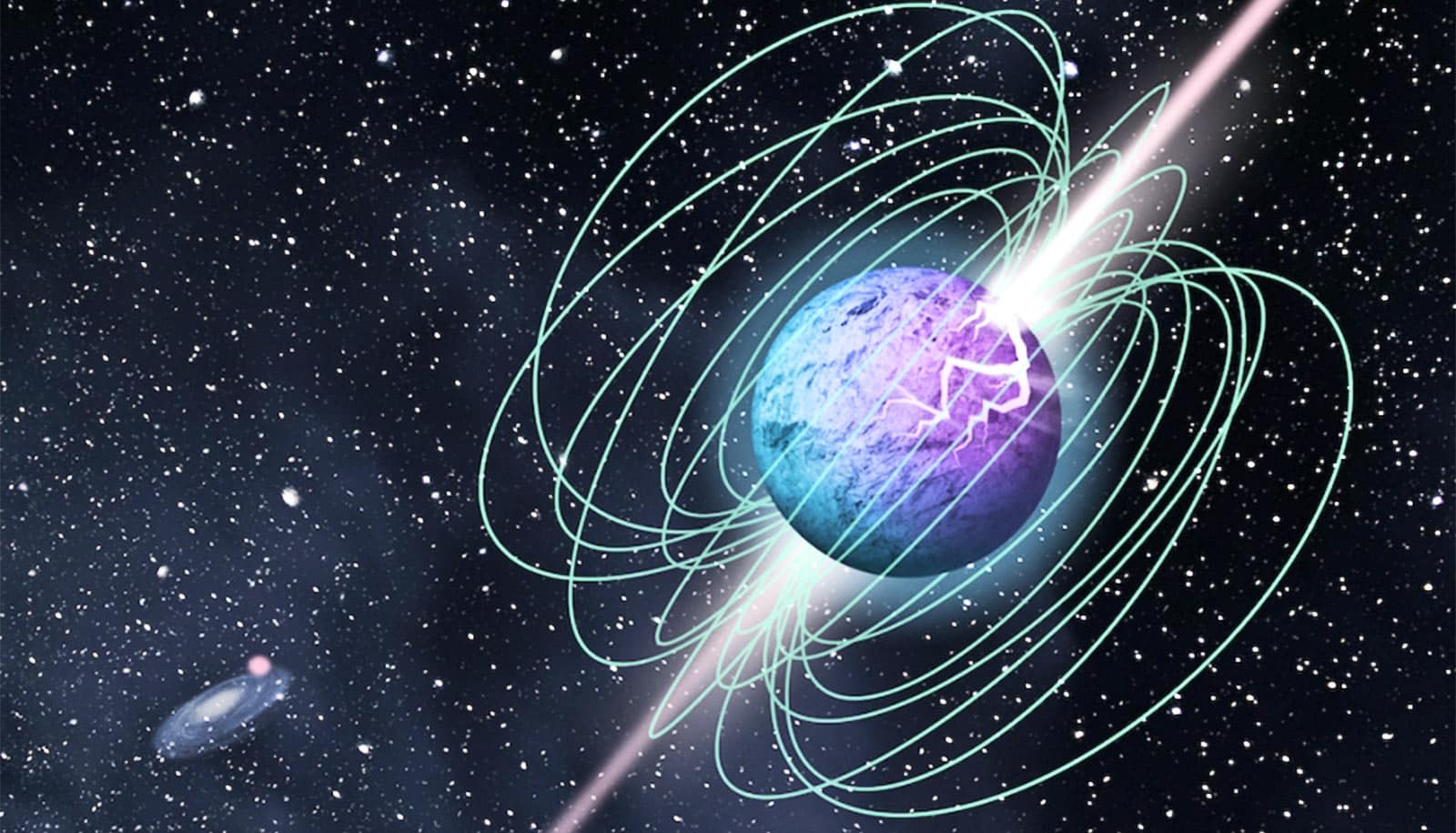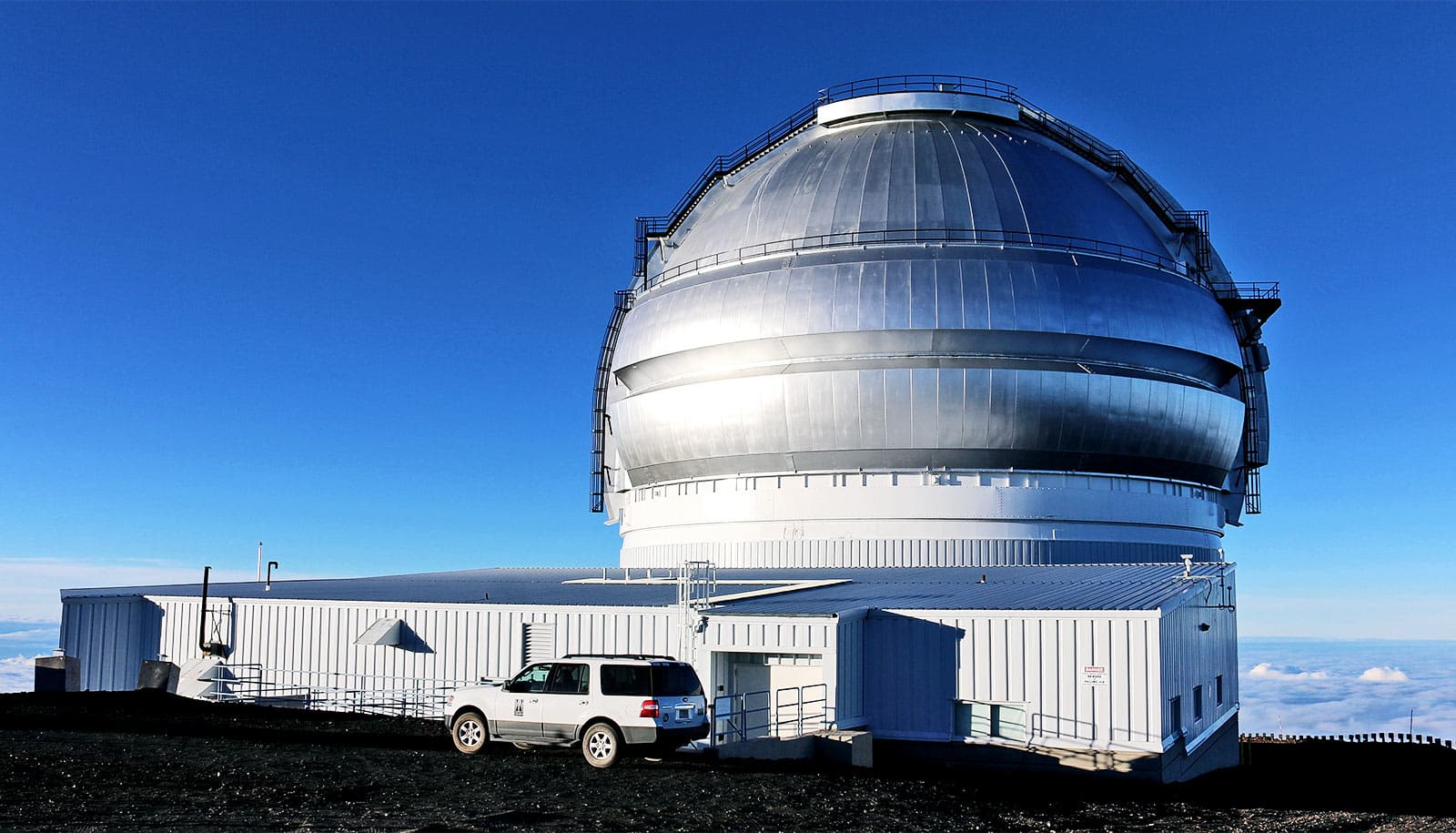Supernovae are the predominant contributors to forming sources that eventually produce fast radio bursts, new research suggests.
Fast radio bursts (FRBs), fleeting blasts of energy from space, are a cosmic enigma.
“Fast radio bursts are one of astronomy’s greatest mysteries,” says lead author Mohit Bhardwaj, a member of the Canadian Hydrogen Intensity Mapping Experiment Fast Radio Burst (CHIME/FRB) collaboration and a postdoctoral fellow at Carnegie Mellon University.
“These extremely powerful radio blasts can travel cosmological distances and emit more energy than the sun does in a thousand years, despite lasting only a few thousandths of a second. Even more intriguing is that, though they hit the Earth roughly every minute from all over the sky, their origin is still unknown.”
The researchers examined 18 nearby FRB hosts, all of which were spiral or late-type galaxies. The prevalence of late-type galaxies suggests that FRB sources predominantly occur in relatively young galaxies, with the sources possibly produced by supernovae that involve the core collapse of a massive star.
“This work identifies an intriguing trend that suggests most local FRBs likely come from core-collapse supernovae,” says Bridget Andersen, a coauthor of the paper and current PhD student at McGill University working under the supervision of Professor Victoria Kaspi. “In future studies, it will be particularly interesting to see if this trend persists with a larger number of localized host galaxies.”
The work holds particular significance because, a year ago, following the detection of an FRB source in a globular cluster of the Messier 81 galaxy—housing an extremely old stellar population—there was speculation that such sources might dominate the FRB population.
Bhardwaj says that the team’s findings disfavor such a scenario and instead support the hypothesis that the majority of FRB sources originate from the demise of massive stars, often resulting in the formation of either black holes or neutron stars.
“Looking ahead, as we amass larger samples of more precisely observed FRBs, we can further scrutinize these distinctions for both nearby and distant FRBs,” he says.
“By conducting more in-depth analyses, we hope to refine our understanding of the diverse origins of FRBs and potentially unveil the underlying mechanisms that drive these cosmic phenomena, shedding light on the intricacies of the universe’s radio signal bursts.”
The CHIME/FRB team recently doubled the catalog of known repeating FRBs and has continued to make progress in the field. The collaboration’s most recent paper, which appears Astrophysical Journal Letters, is significant because it pinpoints the host galaxies of the new nearby FRBs, which are promising candidates for identifying the proposed prompt or afterglow counterparts beyond radio wavelengths.
Understanding the origins of FRBs is a pivotal challenge in contemporary astronomy, and, so far, extragalactic FRBs have exclusively manifested as radio phenomena. By identifying their sources, cosmologists can gain new insights into the extreme astrophysical environments that give rise to these signals, and the physical mechanisms responsible for them.
“The ability to pinpoint the galaxy from which the FRB originated was key to this study. But with CHIME, we can only identify the host galaxies of the closest FRBs,” says coauthor Daniele Michilli, now a postdoctoral scholar at the MIT Kavli Institute for Astrophysics and Space Research. “We are building new CHIME ‘Outrigger’ telescopes in Canada and the US to enable precise sky localizations for all FRBs detected by CHIME. This will revolutionize the field and enable us to test the ideas put forth here.”
One prevailing hypothesis connecting these intense bursts of radio waves to astrophysical processes involves neutron stars, Bhardwaj says. He adds that the prominence of this hypothesis increased in 2020 when CHIME/FRB observed FRB-like bursts from a known highly magnetized neutron star (SGR 1935+2154) in our own galaxy, leading to the identification of magnetars—young, highly magnetized neutron stars—as a likely source.
“Regardless of their origin, these short bursts hold great promise for cosmological studies,” Bhardwaj says. “For each FRB, we can estimate the amount of ionized matter the FRB signal traveled through on the way to Earth. This unequivocally positions FRBs as a very promising probe for studying the distribution of ionized gas in the cosmic web.”
Source: McGill University



